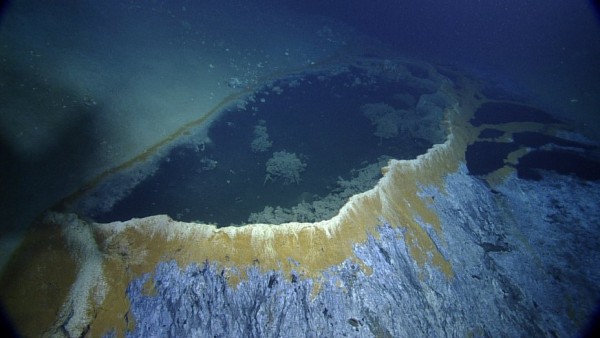By Ana Verayo, | November 02, 2016

Beautiful and intricate crystals of Barite float in this brine pool. (YouTube)
Scientists have discovered a strange and deadly lake, located some 3,300 feet underwater in the Gulf of Mexico.
Also known as the "Jacuzzi of Despair," scientists first detected this in 2014 using a remote underwater robotic explorer known as Hercules. Now, researchers have conducted further investigatation on this lake filled with brine, using another deep-sea exploration submersible vehicle known as Alvin.
Like Us on Facebook
In this new study, researchers from Temple University in Philadelphia explored this underwater pool ecosystem that is teeming with bacteria and organisms, including rich salt deposits. This massive pool measures 100 feet across and is about 12 feet deep.
According to biology professor, Erik Cordes from Temple, this is remarkable since you do not expect a lake or river flowing in the bottom of the ocean, making you feel you are not in this world anymore.
Waters that run inside this underwater pool is so salty, it is estimated to be five times saltier than the rest of its marine habitat. Scientists say that this briny pool water can kill unsuspecting marine animals that venture into these warmer waters, as it can reach temperatures up to 65 degrees.
This warmer brine pool temperature can also attract many sea creatures that often ends in the death of crustaceans. Deep sea crab and crustacean shells and carcasses can be seen around the pool's rim, due to high toxic levels of methane and hydrogen sulfide.
To date, the only organisms that can subsist in this environment are bacteria and some deep sea marine creatures that have already adapted to the temperature. Some of these marine animals are giant mussels and symbiotic bacteria that thrive in the gills of these mussels. These bacteria then feed off the methane in this toxic pool along with tube worms and some shrimp species.
This new study is published in the journal Oceanography.
-
Use of Coronavirus Pandemic Drones Raises Privacy Concerns: Drones Spread Fear, Local Officials Say

-
Coronavirus Hampers The Delivery Of Lockheed Martin F-35 Stealth Fighters For 2020

-
Instagram Speeds Up Plans to Add Account Memorialization Feature Due to COVID-19 Deaths

-
NASA: Perseverance Plans to Bring 'Mars Rock' to Earth in 2031

-
600 Dead And 3,000 In The Hospital as Iranians Believed Drinking High-Concentrations of Alcohol Can Cure The Coronavirus

-
600 Dead And 3,000 In The Hospital as Iranians Believed Drinking High-Concentrations of Alcohol Can Cure The Coronavirus

-
COVID-19: Doctors, Nurses Use Virtual Reality to Learn New Skills in Treating Coronavirus Patients







